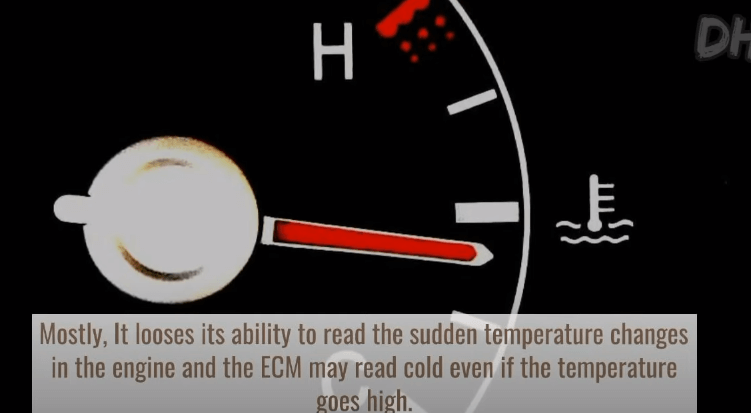This step resets the coolant temperature sensor. The coolant temperature sensor plays a vital role in your car’s engine. It monitors the temperature of the engine coolant and sends this data to the car’s computer. The computer then adjusts the engine’s performance based on this data.
Sometimes, the sensor may malfunction or give incorrect readings. This can lead to engine performance issues or warning lights on your dashboard. Resetting the sensor can often solve these problems. Let’s explore how you can easily reset your coolant temperature sensor and get your car running smoothly again.
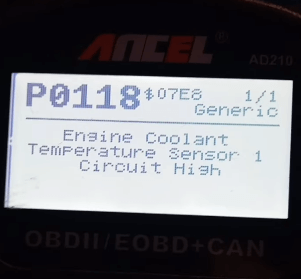
Importance Of Coolant Sensors
Understanding how to reset a coolant temperature sensor is vital for maintaining your vehicle’s health. The coolant temperature sensor plays a crucial role in the overall function of the engine. It monitors the temperature of the engine’s coolant and sends this information to the engine control unit (ECU). Without a properly functioning coolant sensor, your vehicle’s performance and longevity could be at risk.
Function In Engine
The coolant temperature sensor is a small but essential component in your vehicle’s engine system. It primarily measures the temperature of the coolant that circulates through the engine. Here’s how it works:
- Monitors Coolant Temperature: The sensor continuously measures the temperature of the coolant.
- Communicates with ECU: It sends real-time data to the engine control unit (ECU).
- Regulates Fuel Injection: Based on the temperature data, the ECU adjusts the fuel injection for optimal performance.
- Controls Cooling Fans: The sensor triggers the cooling fans to prevent overheating.
To understand its significance, consider these points:
| Function | Impact |
| Monitors Temperature | Prevents Overheating |
| Communicates with ECU | Ensures Engine Efficiency |
| Regulates Fuel Injection | Optimizes Fuel Consumption |
| Controls Cooling Fans | Maintains Safe Operating Temperature |
Impact On Performance
The coolant temperature sensor significantly affects the vehicle’s performance. A malfunctioning sensor can lead to various issues. Here are some ways it impacts performance:
- Fuel Efficiency: A faulty sensor can send incorrect data, causing the ECU to mix incorrect fuel ratios. This leads to reduced fuel efficiency.
- Engine Overheating: Without accurate temperature data, the cooling fans may not activate in time, causing the engine to overheat.
- Poor Engine Performance: Incorrect data can result in improper ignition timing, leading to sluggish engine performance.
- Emissions: A bad sensor can cause the engine to run rich or lean, increasing emissions and failing emission tests.
To further illustrate:
| Issue | Cause | Effect |
| Reduced Fuel Efficiency | Incorrect Fuel Ratios | Higher Fuel Consumption |
| Engine Overheating | Delayed Fan Activation | Engine Damage |
| Poor Engine Performance | Improper Ignition Timing | Sluggish Response |
| Increased Emissions | Rich or Lean Fuel Mix | Failed Emission Tests |
Maintaining a properly functioning coolant temperature sensor is crucial for optimal engine performance. Regular checks and timely resets can save you from costly repairs and ensure your vehicle runs smoothly.
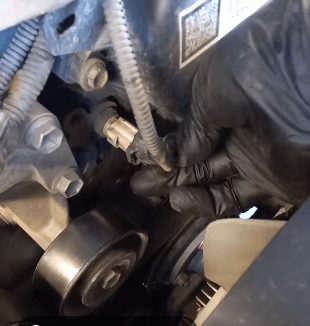
Signs Of Sensor Issues
The coolant temperature sensor is crucial for your car’s engine. It monitors the temperature of the coolant and sends this information to the vehicle’s computer system. If this sensor malfunctions, it can cause several issues. Recognizing the signs of sensor problems is important to keep your vehicle running smoothly. Let’s explore some common signs of sensor issues.
Temperature Fluctuations
One of the first signs of a faulty coolant temperature sensor is temperature fluctuations. The sensor helps maintain the engine’s temperature. When it fails, the temperature gauge on your dashboard might show erratic readings. These fluctuations can lead to overheating or underheating, both of which are harmful to the engine.
Here are some specific indicators:
- Erratic readings: The temperature gauge moves up and down unpredictably.
- Overheating: The engine overheats even when the coolant level is sufficient.
- Underheating: The engine remains too cool, affecting performance.
These issues not only impact the engine’s performance but can also lead to more serious damage if not addressed. The sensor helps regulate the engine’s temperature, ensuring it runs efficiently. If the sensor fails, the engine may not run at its optimal temperature, causing various performance problems.
Check Engine Light
The check engine light is another common indicator of a coolant temperature sensor issue. When the sensor malfunctions, it sends incorrect data to the vehicle’s computer. This triggers the check engine light. The light can indicate various problems, but a faulty sensor is a frequent cause.
Some specific symptoms related to the check engine light include:
- Constant illumination: The check engine light stays on continuously.
- Intermittent flashing: The light flashes periodically, indicating a problem.
- Error codes: Diagnostic tools reveal codes related to the coolant temperature sensor.
When the check engine light comes on, it’s crucial to diagnose the issue promptly. A malfunctioning sensor can cause the engine to run too rich or too lean. This affects fuel efficiency and overall performance. Using a diagnostic tool can help pinpoint the exact problem, whether it’s the sensor or another issue.
Addressing these signs early can prevent more severe engine problems. Regular maintenance and timely repairs ensure your vehicle operates efficiently.
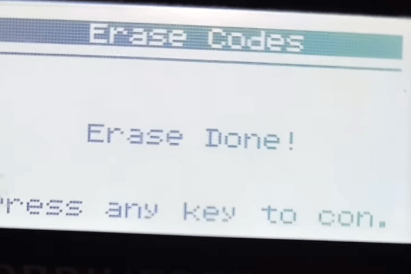
Tools Required
Resetting the coolant temperature sensor can be a straightforward task if you have the right tools. Ensuring you are properly equipped not only makes the process smoother but also helps you avoid potential mistakes. Let’s take a look at the tools you will need to get started.
Basic Tools
Before you begin, gather some basic tools. These tools are essential for almost any car maintenance job, including resetting the coolant temperature sensor. Here’s a list of the basic tools you will need:
- Wrenches (various sizes)
- Screwdrivers (flathead and Phillips)
- Pliers
- Socket set
- Multimeter
- Gloves
- Safety goggles
Wrenches and screwdrivers are essential for removing bolts and screws that hold the sensor in place. Pliers can help you grip and manipulate small parts. A socket set will come in handy for loosening and tightening nuts.
Using a multimeter allows you to test the sensor’s electrical connections. Wearing gloves and safety goggles protects your hands and eyes from any debris or coolant that might spill during the process. Safety should always be a priority.
Having these tools on hand will ensure you are prepared to tackle the job efficiently. Now, let’s move on to the diagnostic equipment you will need.
Diagnostic Equipment
In addition to basic tools, you will need some specialized diagnostic equipment. This equipment helps you accurately identify and reset the coolant temperature sensor. Here’s a list of what you will need:
- OBD-II Scanner
- Infrared Thermometer
- Vehicle Manual
- Diagnostic Software (if required)
An OBD-II scanner is crucial. It reads the error codes from your car’s computer, indicating if there are any issues with the coolant temperature sensor. The scanner plugs into your car’s OBD-II port, usually located under the dashboard.
An infrared thermometer helps you check the engine temperature. This ensures the sensor is functioning correctly after resetting it. Referencing the vehicle manual can provide specific instructions for your car model. This ensures you follow the correct steps.
Sometimes, diagnostic software is required for more detailed analysis. This software can be used on a laptop or mobile device and provides a deeper dive into the car’s electronic systems. Make sure to have the necessary software installed and ready.
With these diagnostic tools, you can accurately pinpoint issues and ensure the coolant temperature sensor is reset properly. Being well-prepared with the right equipment saves time and ensures a successful reset.
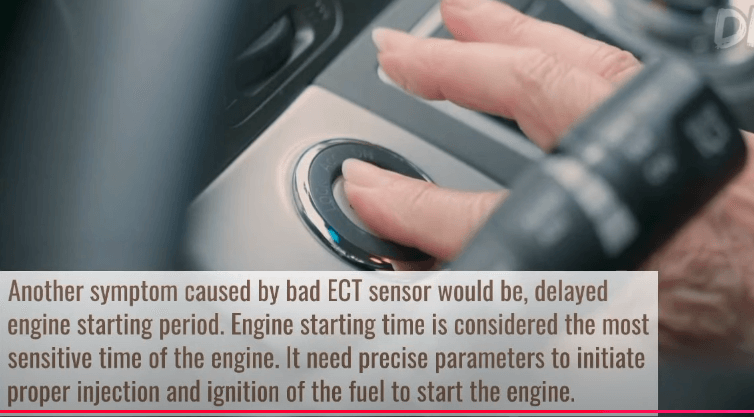
Safety Precautions
Resetting the coolant temperature sensor is an essential task for car maintenance. This sensor helps regulate the engine’s temperature, ensuring it runs smoothly and efficiently. Before diving into the process, it is crucial to follow certain safety precautions. These measures protect both you and your vehicle from potential harm.
Engine Cooling
Before starting, ensure the engine is completely cool. Working on a hot engine can be dangerous. Steam and hot coolant may spray out when you open the radiator cap or disconnect the sensor. To avoid this, follow these steps:
- Turn off the engine: Allow the vehicle to sit for at least an hour.
- Check the temperature gauge: Make sure the temperature needle is at the lowest point.
- Open the hood: This allows heat to escape faster.
Once you confirm the engine is cool, proceed with caution. Look for any signs of damage or leaks in the cooling system. A damaged system can cause unexpected problems while resetting the sensor. If you notice any issues, address them before continuing.
Additionally, have a bucket or container ready to catch any coolant that might spill. This keeps the workspace clean and prevents slips. Dispose of the old coolant properly, as it is hazardous to the environment.
| Step | Description |
| 1 | Turn off the engine and let it cool. |
| 2 | Check the temperature gauge. |
| 3 | Open the hood to release heat. |
| 4 | Inspect the cooling system for damage. |
| 5 | Prepare a container for coolant spills. |
Protective Gear
Wearing the right protective gear is vital when resetting the coolant temperature sensor. This prevents injuries from sharp objects, hot surfaces, and chemicals. The following items should be part of your gear:
- Gloves: Protect your hands from burns and cuts.
- Safety goggles: Shield your eyes from splashes of coolant.
- Long sleeves: Cover your arms to prevent skin contact with hot or sharp parts.
- Closed-toe shoes: Protect your feet from spills and heavy objects.
Ensure your gear is in good condition before starting. Damaged or worn-out protective equipment can fail to provide adequate protection. Wear thick gloves that offer a good grip, as coolant can be slippery. Safety goggles should fit snugly and not fog up easily.
It is also wise to keep a first aid kit nearby. Accidents can happen even with the best precautions. Having a first aid kit allows you to address minor injuries quickly. Familiarize yourself with its contents and ensure it is well-stocked.
By following these safety precautions, you can reset the coolant temperature sensor confidently. Proper gear and a cool engine create a safer working environment. Always prioritize safety to avoid unnecessary risks and ensure the job is done correctly.
Accessing The Sensor
The coolant temperature sensor is a vital part of your vehicle’s engine management system. It helps the engine control unit (ECU) monitor and adjust the engine’s temperature. If your sensor is malfunctioning, it can cause a variety of issues. Resetting the sensor can help resolve some of these problems. To do this, you need to access the sensor first. This guide will walk you through the steps to locate and access the coolant temperature sensor.
Locating The Sensor
The coolant temperature sensor is usually located near the engine block or cylinder head. It is important to find it accurately to ensure a successful reset. Here are the steps to locate the sensor:
- Consult the vehicle’s manual: The manual will have a diagram showing the exact location of the sensor.
- Look near the thermostat housing: The sensor is often located near the thermostat housing. This is where the coolant flows to the radiator.
- Identify the sensor: The sensor typically has a two-wire connector. It may be screwed into the engine block or cylinder head.
Here is a simple table to help you understand the common locations based on vehicle type:
| Vehicle Type | Common Sensor Location |
| Sedan | Near the thermostat housing |
| SUV | Engine block |
| Truck | Cylinder head |
Ensure the engine is cool before you start working on it. This will prevent burns and other injuries. Now that you know where the sensor is, you can move on to removing any covers that might be in the way.
Removing Covers
Many vehicles have protective covers over the engine and its components. Removing these covers will give you better access to the coolant temperature sensor. Follow these steps:
- Identify the covers: Look for any plastic or metal covers over the engine. These may be held in place with screws or clips.
- Gather your tools: You will need a screwdriver or a socket set to remove the screws. Make sure you have the right size.
- Remove the screws: Unscrew the screws or clips holding the cover in place. Keep the screws in a safe place so you can reattach the cover later.
- Lift the cover: Carefully lift the cover off the engine. Be mindful of any wires or hoses that might be attached to it.
Removing the covers will expose more of the engine and make it easier to reach the coolant temperature sensor. Here are some tips to keep in mind:
- Work in a well-lit area: Good lighting will help you see what you are doing.
- Take your time: Removing covers can be tricky. Rushing might cause damage.
- Label the screws: If there are different types of screws, label them to remember where they go.
Once the covers are removed, you will have clear access to the coolant temperature sensor. You can now proceed with resetting the sensor.
Resetting The Sensor
The coolant temperature sensor is a crucial part of your vehicle’s cooling system. It monitors the temperature of the coolant and sends this information to the engine control unit (ECU). If the sensor malfunctions, it can cause the engine to overheat or run inefficiently. Resetting the sensor can sometimes resolve these issues. Below, we outline the steps for resetting the sensor.
Disconnecting Battery
Disconnecting the battery is a simple but effective way to reset the coolant temperature sensor. Follow these steps to do it safely:
- First, ensure the vehicle is turned off and the keys are removed from the ignition.
- Open the hood and locate the battery. The battery usually sits in the engine bay, secured with a bracket.
- Using a wrench, loosen the nut on the negative (-) terminal. This is typically marked with a minus sign.
- Once the nut is loose, gently lift the cable off the terminal. Be careful not to touch the positive (+) terminal to avoid sparks.
- Wait for about 15 minutes. This allows the ECU to reset fully.
- Reconnect the negative cable to the terminal and tighten the nut securely.
By following these steps, you should successfully reset the coolant temperature sensor. This method is often used because it resets the ECU, clearing any stored error codes related to the sensor.
Clearing Codes
After disconnecting the battery, clearing the error codes is the next step. This ensures the ECU no longer retains any past errors that could affect the sensor’s performance. Here’s how to do it:
- Connect an OBD-II scanner to the diagnostic port. The port is usually under the dashboard, near the steering wheel.
- Turn the ignition key to the “on” position without starting the engine.
- Follow the scanner’s instructions to scan for error codes. Note down any codes that appear.
- Select the option to clear the codes. This will reset the ECU’s memory.
- Turn off the ignition and disconnect the scanner.
Clearing the codes ensures the system is clean and ready to monitor the coolant temperature sensor accurately. It also prevents the ECU from acting on outdated error data. Keeping a code scanner handy can save you time and money on diagnostics.
In some cases, both disconnecting the battery and clearing the codes may be necessary. These steps are simple but effective ways to ensure your coolant temperature sensor functions correctly.
Testing The Reset
Resetting the coolant temperature sensor can be a straightforward process. But testing the reset is crucial to ensure everything works correctly. This step will help you confirm that the sensor is accurately reading temperatures and that your vehicle’s engine management system is functioning as it should.
Reconnecting Components
After resetting the coolant temperature sensor, the next step is to reconnect all components you may have disconnected. This includes the sensor itself, the battery, and any other parts you may have had to remove to access the sensor. Here’s a simple guide to follow:
- Reconnect the Battery: Start by reconnecting the negative battery terminal. This will restore power to your vehicle’s electrical systems.
- Attach the Sensor: Ensure the coolant temperature sensor is securely plugged in. Double-check the connection to avoid any loose fittings.
- Reinstall Other Components: If you had to remove any other parts, such as engine covers or air intake components, make sure to reinstall them properly.
A quick review of the connections can prevent future issues. If the connections are secure, move on to the next step.
Monitoring Readings
Once all components are reconnected, start your vehicle and let it run for a few minutes. This will allow the engine to reach its operating temperature. Use an OBD-II scanner or a multimeter to monitor the coolant temperature sensor readings. Here’s how to do it:
- Plug in the OBD-II Scanner: Connect the scanner to the OBD-II port, usually located under the dashboard.
- Access Live Data: Navigate to the live data section on the scanner. Look for the coolant temperature reading.
- Check Temperature: Ensure the temperature readings are within the normal range (usually between 195°F and 220°F).
If the readings are accurate, your reset was successful. If the temperatures are off, double-check your connections and consider consulting a professional.
Monitoring the readings helps ensure your engine runs smoothly and efficiently. An accurate coolant temperature sensor is key to preventing overheating and maintaining optimal performance.

When To Seek Help
Resetting your coolant temperature sensor can sometimes be tricky. While you may want to handle the issue on your own, there are times when seeking professional help becomes essential. Knowing when to seek help can save you time, money, and stress.
Persistent Issues
Even after resetting your coolant temperature sensor, some issues may persist. If you continue to experience problems, it might be time to consult a professional. Here are some persistent issues to watch for:
- Check Engine Light: If the check engine light remains on, there could be an underlying issue that needs expert attention.
- Erratic Temperature Readings: If the temperature gauge fluctuates or shows inconsistent readings, there might be a problem with the sensor or wiring.
- Overheating: Continuous overheating can damage your engine. If the problem persists, it’s essential to have it checked professionally.
Keep an eye on these common signs:
| Sign | Description |
| Strange Noises | Unusual sounds from the engine area can indicate sensor issues. |
| Poor Fuel Economy | If your car consumes more fuel than usual, the sensor might be faulty. |
These signs indicate that something is wrong beyond a simple reset. In such cases, it is best to seek professional help to avoid further damage to your vehicle.
Professional Assistance
When persistent issues arise, professional assistance becomes necessary. Here’s why:
- Expert Diagnosis: Professionals have the tools and expertise to diagnose the problem accurately. They can pinpoint the issue, whether it’s the sensor or another component.
- Proper Repair: A trained mechanic can repair or replace the faulty sensor, ensuring it functions correctly. They will use the right parts and techniques to fix the issue.
- Safety: Working on your vehicle’s engine can be dangerous. Professionals follow safety protocols to prevent accidents and injuries.
Seeking professional help has several benefits:
- Time-saving: Professionals can quickly identify and fix the issue, saving you time and hassle.
- Cost-effective: While it may seem expensive, professional repair can prevent further damage and costly repairs in the future.
- Peace of Mind: Knowing that your vehicle is in good hands gives you peace of mind and ensures your car runs smoothly.
In conclusion, while resetting a coolant temperature sensor can be a DIY task, persistent issues and the need for professional assistance should not be overlooked. Proper care and timely professional help can keep your vehicle in top condition.
Frequently Asked Questions
How To Calibrate A Temperature Sensor?
To calibrate a temperature sensor, use a known temperature source like an ice bath. Submerge the sensor and compare readings. Adjust the sensor’s calibration settings until readings match the known temperature. Repeat the process with different temperature points for accuracy.
What To Do After Changing The Coolant Temperature Sensor?
After changing the coolant temperature sensor, check for leaks and ensure proper installation. Reset the engine’s computer for accurate readings. Monitor the engine temperature closely for any issues.
Will Disconnecting Battery Reset Temperature Gauge?
Disconnecting the battery may reset the temperature gauge temporarily. The gauge will recalibrate once the car is restarted.
What Happens When Coolant Temperature Sensor Goes Bad?
A faulty coolant temperature sensor can cause engine overheating, poor fuel economy, and rough idling. The check engine light may turn on.
Conclusion
Resetting your coolant temperature sensor is easier than you think. Follow the steps carefully. Ensure you have the right tools. Disconnect the battery first. Remove the faulty sensor gently. Install the new sensor securely. Reconnect the battery. Check for any leaks.
Start the engine to test the new sensor. Proper maintenance keeps your car running smoothly. Regular checks prevent future issues. Your car’s health depends on it. Stay proactive, stay safe.

Unlock the full potential of your smart home device. Learn how to connect, automate, and optimize your smart devices for a seamless and convenient lifestyle.

